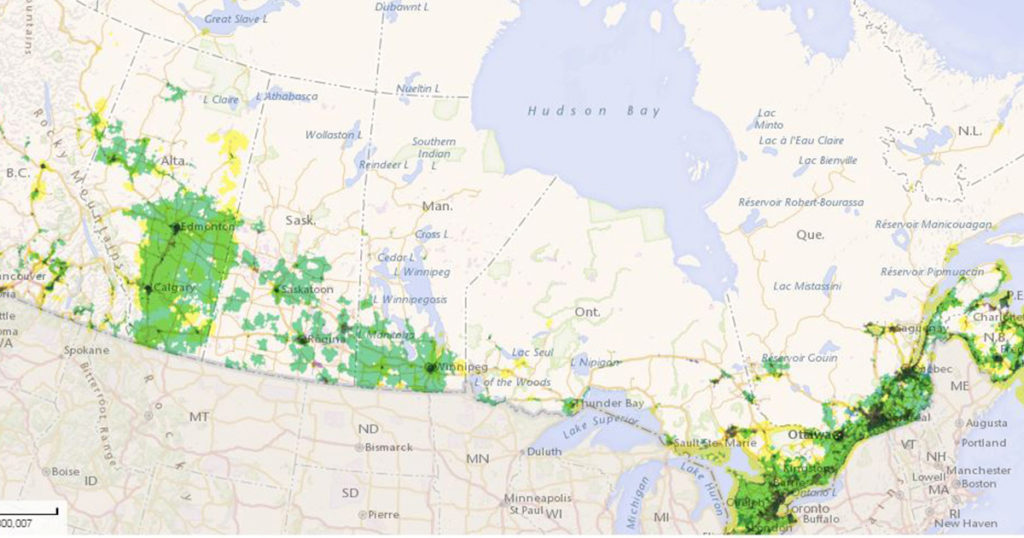
CRTC Broadband Availability Map Shows Digital Divide in Canada
The Canadian Radio-television and Telecommunications Commission (CRTC) unveiled a new map that shows the availability of broadband Internet access service at or above the target speeds of 5 megabits per second download and 1 megabits per second upload within hexagon areas of 25 square kilometres. One look at this interactive tool quickly shows the lack of access in remote areas.
As cable and Digital Subscriber Line (DSL) technologies most often use legacy copper networks, it’s not surprising to find that they are concentrated in urban areas where the majority of Canadians live. These networks need to be connected directly to the premises through distribution enclosures.
Likewise, the newer fiber networks are expensive so are first being deployed in the most densely populated urban areas. These often terminate in enclosures that may then in turn serve entire neighborhoods with legacy copper cabling.
Outside of urban areas, fixed wireless and LTE cellular service is being used although they are generally less reliable and have lower speeds than copper and fiber networks. The prairie-provinces are doing a good job of getting large areas covered by this type of service. Ontario, Quebec and New Brunswick have this service mostly in areas between urban centers. Nova Scotia and Newfoundland rely more on LTE networks.
The CRTC expects the speed targets – 5 Mbps for downloads (data that consumers are receiving from the Internet, including files, web sites, pictures, music, and movies) and 1 Mbps for uploads (data that consumers are sending to the Internet) – will be met through a combination of private investments, government funding and public-private partnerships.
While broadband installers work feverishly to keep up with the demand for running FTTH, other industry players are debating the very services that residents and business need to compete in the digital economy.
At the heart of the third phase of Let’s #TalkBroadband Internet, the Canadian Radio-television and Telecommunications Commission’s (CRTC) consultation on basic telecommunications services, which launched in April 2015, topics being explored include whether access to broadband Internet is a basic right and whether the CRTC’s 5/1 Mbps target is sufficient for Canadians to participate in the digital economy.
According to a recent CRTC communications monitoring report, 96% of Canadian households can access a download speed of 5 Mbps, sufficient for streaming multimedia content. Most Canadians (94%) can access these speeds using either landline or fixed-wireless.
Despite this access, Canadians are demanding more bandwidth from broadband service providers. The CRTC report found that the average monthly amount downloaded by residential subscribers increased 49% between 2013 and 2014 to 66.5 GB per month, and an average of 46% annually over the last five years. This is likely due to the explosion of online streaming content, mostly videos and gaming, which are high-bandwidth consuming services. Uploads have also increased 43% in 2014, reaching 8.6 GB per month.
After listening to several national telcos, ISPs, community organizations and cable companies, CRTC chairman Jean-Pierre Blais reflected on the opinions expressed stating: “Universal broadband access throughout Canada is vital to the full economic participation of Canadians, to their ability to thrive in a global digital society and to further strengthen the fabric of the country, locally, regionally and nationally.”
As well, he agreed that all Canadians should have access to comparable broadband services at comparable prices.

